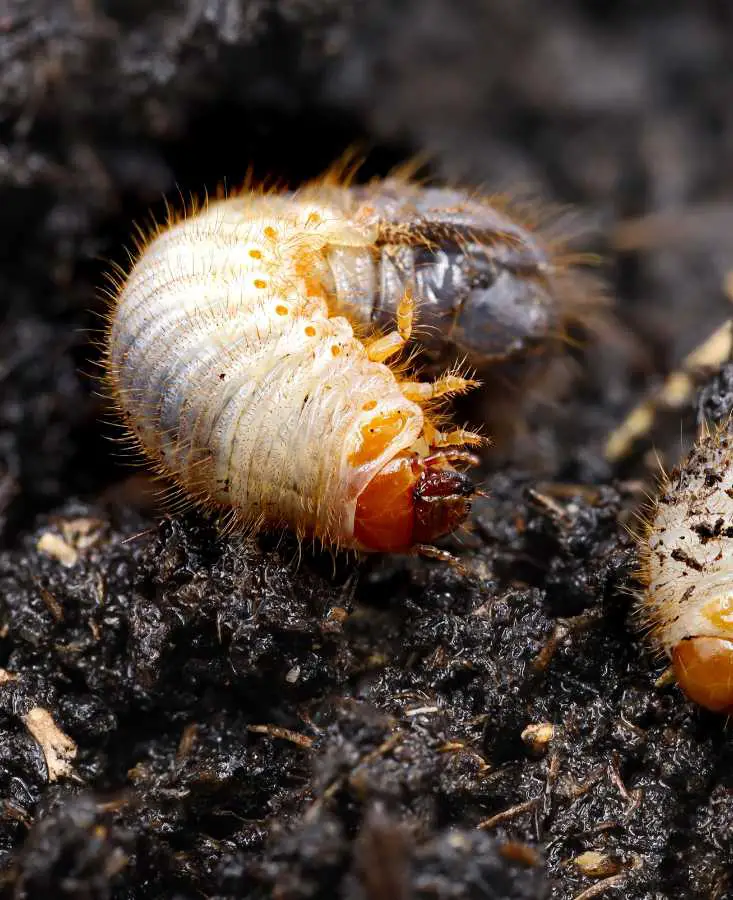Growing Brussel Sprouts in Containers
You may be interested in growing brussel sprouts but feel discouraged because you have a small garden area or you don’t have any space. Little or no space shouldn’t be a limiting factor in this case, so how do I grow brussel sprouts in containers?
Get a 12″ X12″ -5 gallons of water sized planter, pour a well-drained soil, and space the sprouts at 24 inches. Maintain cooler temperatures of between 45oF and 75o F for optimal growth. Allow direct sunlight, water, prune, mulch, sow, apply nitrogenous fertilizer and spray to prevent pests and diseases.
Here is how to grow sprouts in containers and some tips for so successfully:
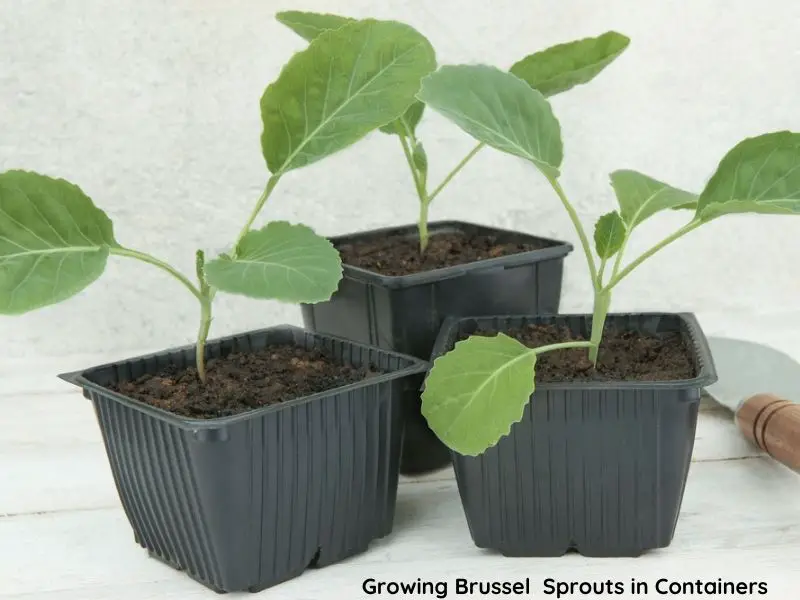
Can brussels sprouts be grown in containers on my yard?
You can grow brussel sprouts in containers in your yard, and they will mature if you provide optimal conditions favoring their growth. With well-drained moist soils, total sun exposure of at least six hours, fertilizing after every four weeks, and cooler temperatures, the brussel sprouts will thrive in pots.
Is brussel sprout easy to grow on containers?
Growing brussels sprouts on containers is a challenging task, and if you don’t provide all the basic requirements, the plant won’t mature.
Brussels sprouts need certain temperatures to grow, a specific planting time, more sunlight exposure, and monthly fertilization. These endless requirements make planting them in containers and taking care of them seem cumbersome.
But if you give it its basic needs, follow the tips, and are more patient, you will never find it hard to grow them.
How to grow brussel sprouts in pots- containers?
Brussel sprouts are annual plants that take about four months to fully mature. There are certain conditions to follow to plant them in pots to full maturity. Check below for the complete guide on how best to grow brussel sprouts in pots in your yard.
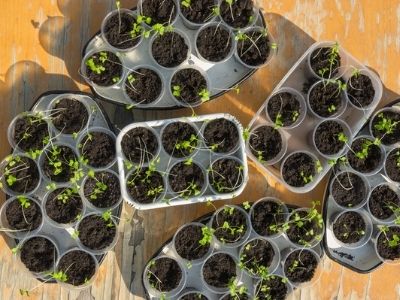
1. Choose the right pot
The successful growing of brussel sprouts in containers starts with choosing the right pot for the plant. The pot should be 5 gallons of water sized, 12 inches deep, and 12 inches wide. Plant each sprout in its container. If you intend to grow several sprouts in a single large container, be sure to space them 24 inches apart.
The pot should also be well-draining, preferably with drainage holes at the bottom. Light-colored containers are suitable for planting sprouts as they keep warmth away. Wood or plastic pots are suitable for use.
2. Select well-drained soil
Brussel plants need well-drained soil to grow well. The soil should be loamy with a mid acidity of about 6.5 to a neutral of 7. The soil should be moist, soaked but not overwatered. Water once weekly to a level of 1- 1.5 inches in the soil. Avoid dry soils during brussel sprouts formation and maturity.
3. When to grow brussel sprouts
Brussels sprouts are best grown in cool temperatures. If you live in cold winter regions, grow them from early to mid-Summer so you can harvest them in mid-Fall or early Winter.
Whereas if you live in mid to warmer winter regions, sow Brussel seeds in mid or late Summer to harvest them in mid or late Winter.
4. Temperature requirement
Brussel sprouts thrive well in cooler temperatures between 45oF and 75o F. In extremely hot or cold conditions, the plant stresses and may not grow to maturity. Don’t expose the sprouts to strong winds. This is because they have thinner bases, and the winds might blow them away.
Sprouts maturing in warm, hot temperatures taste bitter.
5. Sunlight requirement
The sprout requires full sun to grow well. Expose the plant to full sunlight for at least 6 hours daily. When grown in warmer climates, the plants need partial shade. To develop the plant indoors, select a spot that receives direct sunlight near a window.
6. Fertilizer requirement
When planting them, mix the soil with compost manure for the seedlings to germinate. Apply commercial fertilizers rich in Nitrogen after the seedlings are a month old and 12 inches tall. Nitrogen is essential for the growth and maturity of strong leaves.
To apply fertilizer: Mix half a tablespoon of the fertilizer with one gallon of water for each plant. Apply it on the plant’s base and not its leaves. To ensure the fertilizer is fully absorbed to avoid burning the plant, soak the soil in more water to dissolve it thoroughly. Apply fertilizer to the plant after every four weeks.
7. Sowing
Sow the seeds in well-drained, moist soil. Insert the seeds about half an inch into the wet soil. Brussel sprouts are best planted in pots and kept indoors for about six weeks before moving to the yard. This helps to protect them from early pest infestations. Also, they are protected from the hot summer heat while young. If sowed with optimal conditions, their seedlings appear after 5- 10 days.
As the seedling grows, expose it to more sunlight gradually till they are fully exposed.
8. Mulching
Mulched soils remain moist and cool, though mulching is optional. Put dry grasses about 12 inches to cover the sprouts if you want to harvest them in Winter.
9. Pruning
Cut the lower leaves of the brussels to allow more new leaves and buds to grow. Cut any yellowing leaves on the lower part of the stalk to enable more sunlight to penetrate to the stem where the buds are.
10. Harvesting
It takes about 3- 4 months for brussel sprouts to fully mature. The buds at the bottom mature earlier than the ones at the top of the stem. When the buds are ripe and 1-inch diameter, turn and twist them from the bottom, coming upwards. Brussel sprouts harvested on a light sunny day after light overnight frost taste sweeter and better.
11. Handling pests and diseases
It’s advantageous to grow each stalk on their pots as this helps control the spread of pests and diseases from one plant to the other. Use row covers to protect young sprouts from pests.
Do brussel sprouts need sun or shade?
Brussel sprouts need total sun exposure to grow and mature to edible buds and leaves. Though a brussel sprout is a cool temperature plant, it must be planted in 45oF-75oF and exposed to direct sunlight for at least 6 hours daily.
In hot temperature places, a brussel sprout may need partial shade. Extreme hot temperature conditions stress the plant, and its leaves may scorch.
Tips for growing brussels sprouts on containers for my yard
Brussel sprouts produce sweet edible buds, yet they are challenging to grow. For them to grow successfully to maturity, various factors need to be considered and met. Such are light, soil, temperatures, etc. You will have an abundant harvest after four months if you provide optimal conditions when growing brussel sprouts.
Here are some tips for growing brussel sprouts on containers successfully.
1. Expose brussel sprouts to sunlight for at least 6 hours
Take the pots out for at least six hours daily for the buds to get the sunlight required to grow and develop.
2. Plant the sprouts in well-drained soils
Brussel sprouts need well-drained, moist soils to thrive. The soil should never be dry or overwatered. Dip your finger or a stick in the pot to confirm the status of the soil and water accordingly. The containers used should have drainage holes underneath to remove any excess water to prevent overwatering.
3. Add mulch around the sprouts
Dry grasses around the sprouts help to retain moisture keeping the soil moist. Add mulch above the topsoil for maximum moisture retention.
4. Remove yellowing leaves
Yellowing leaves below the stalk prevent it from receiving enough sunlight for mature buds. Be sure to remove any yellowing leaves around the stem to promote the maturity of buds.
5. Apply Nitrogen fertilizer once a month
While Nitrogen fertilizers make the sprouts’ foliages greener, healthier, and promote faster growth, adding excess burns to the foliage. Don’t apply any Nitrogen fertilizer to the seedling before it grows to a month old. Apply nitrogen fertilizers once a month once the sprouts are older than a month.
6. Plant sprouts in places between 45oF-75oF
Lower temperatures below 45oF make the sprouts dormant and stressed. High temperatures above 75oF also stress the plant, and its leaves may scorch.
The ideal temperature range to grow the sprouts is between 45oF and 75oF. In this range, the sprouts will thrive well.
7. Harvest after an overnight frost
To harvest sweet-tasting buds, gather them a day or two days after an overnight frost. Don’t harvest the buds in hotter weather because they will taste bitter.
8. Add firm but not compact soil around the stalk
Brussel sprout roots are shallow; therefore, strong winds can easily carry them away. Be sure to add firm but not too compacted soil around the stalk to offer extra support to the stem.
9. Pinch the top of the stalk
Pinch the top of brussel sprouts to make its buds mature faster.
10. Sow seeds in early or late summer
In cold season places, sow brussel sprout seeds in early or mid-summer, while in warmer regions, sow them in mid or late summer.
Here are some brussels in containers ideas:
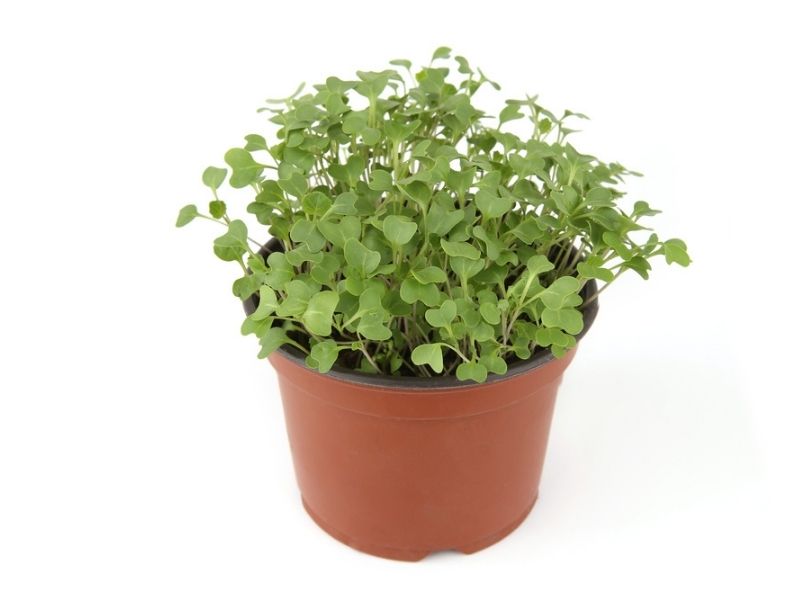
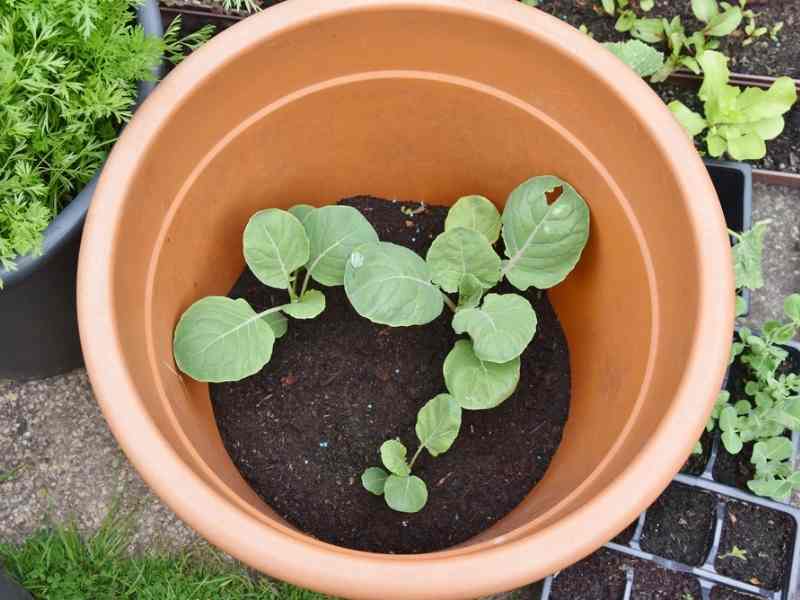
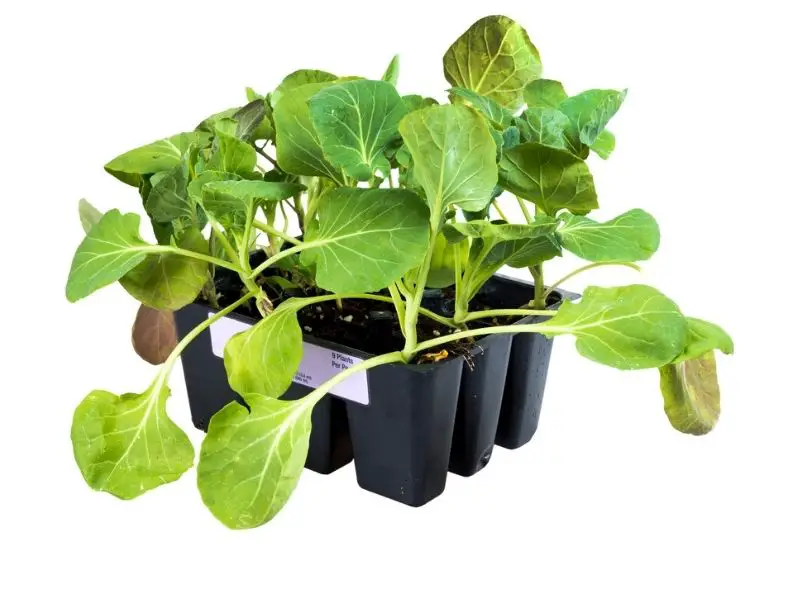
Sources and References
- UtahState University: Brussel Sprouts in the Garden.
- University of California Agriculture and Natural Resources: Managing Pests in Gardens: Vegetables: Brussel Sprouts.



